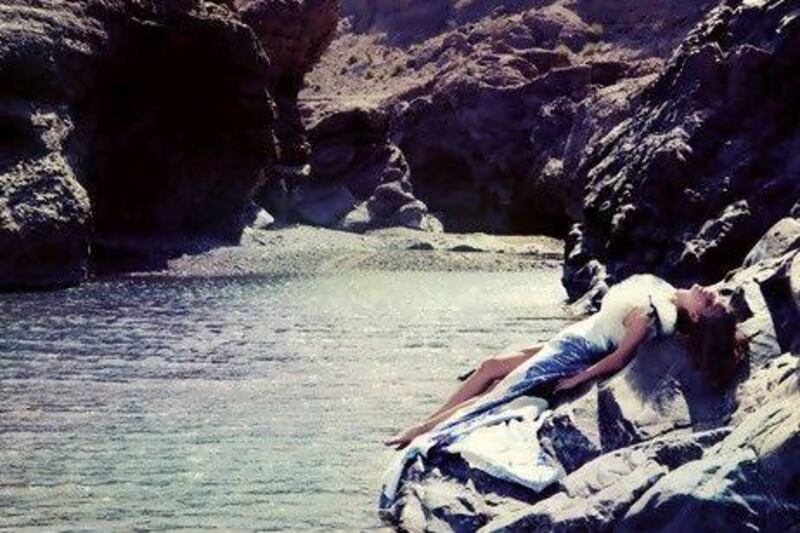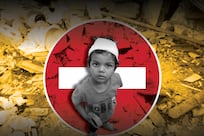On June 18, 1940, shortly after the evacuation of allied troops from Dunkirk and France’s capitulation to Germany, London’s Evening Standard newspaper published a drawing by the political cartoonist David Low. It showed a solitary, square-jawed British soldier standing defiant on an isolated, storm-lashed rock, beset by raging seas. “Very well,” he says, shaking his fist at the flotilla of enemy aircraft looming overhead, “alone.”
This, according to David Edgerton, the Hans Rausing professor at the Centre for the History of Science, Technology and Medicine at Imperial College London, is “one of the most misleading images in British history”, part of a national mythology that, he says, has “profoundly affected British decisions to go to war, from Suez to Iraq”.
This is a theme Edgerton has pursued, sometimes controversially, in academic papers since the 1980s, and in this essentially academic book he decries Britain’s continuing and “obsessive fascination” with the early years of the war – the touch-and-go calamities of the evacuation from France, the Battle of Britain, the Blitz – an obsession he says serves only to “comfortingly overstate” Britain’s role in the war.
In fact, he says, Britain was neither weak nor alone. It was “supported economically and politically by much of the rest of the world, from the United States to the states of the River Plate; from the African empire of a defeated Belgium, to the Dutch West and East Indies. Churchill’s decision to fight on in 1940 was hardly irrational, reckless or merely heroic.”
Merely heroic? Every now and then a book comes along that can change the way you see yourself, or the way you see your country. This isn’t such a book. Undermining any nation’s self-image is, as Edgerton concedes, not something to be undertaken lightly – after all, as he concedes: “What is known and what is believed about Britain in the Second World War have mattered to many people, for many reasons” – but he sets about the task anyway. He seeks to make the point that Britain had the industrial might and wherewithal to withstand the Nazi onslaught and, in so doing, offers a tribute of sorts to British efficiency. But in practice he diminishes not only the sacrifices of individuals but also the real peril in which Britain stood, very much alone, in 1940.
It is true that Britain had access to the productivity and manpower of the empire, though only by dint of the sacrifices of the merchant and Royal Navy sailors who fought and died to keep open the vital supply lines. But Edgerton deals in facts and figures – this is a book of statistics, of comparisons of British and German economies, production and import figures for food, fuel and weapons – and not in flesh and blood.
So while we learn that in the five years from 1940 to 1944 only once did Germany produce more military aircraft in a year than Britain (with the latter outnumbering the former overall by 111,400 to 100,000 machines), we read nothing of the human cost of the death and destruction visited on Britain in what Winston Churchill, its wartime leader, famously called its darkest hour.
What is most remarkable about statistics such as these is that they were achieved at all. In the face of horrendous logistical problems of supply of raw materials and manpower, the British still managed to outperform a Germany that was powered by slave labour. Indeed, it was in the factories that the key ideological battle of the Second World War was fought, and where the victory of freedom over tyranny was hammered out. In Britain, an army of housewives tilled the soil for food or toiled over lathes to produce everything from bullets to bombers, while according to one estimate the economy of the Third Reich was sustained by as many as 12 million forced labourers kidnapped from occupied territories.
Concerned only with numbers, Edgerton is spared – and spares his readers – the whiff of cordite, the stench of burning flesh and the long, deafening nights of terror spent huddled in an Anderson shelter as the bombs rained down. The Blitz, he writes, did not “live up to the horror stories painted by many ... in the 1930s; nor indeed to later accounts of [its] destructiveness”. Yet in 1940, the entire world wondered at Britain’s ability to “take it”.
“I’ve seen too many women and kids pulled out of houses dead,” wrote one US correspondent in London, Quentin Reynolds, in October that year. “The New York papers shouldn’t send war correspondents over here; they should send sportswriters. This is a new sport ... It is called shooting fish in a barrel.”
Even the German propaganda machine evoked “London’s ability to carry on under a continuous hail of bombs, amid seething wreckage and raging flames, without a roof over the heads of people, without sleep and with the slenderest food supplies” (before going on to dismiss this as due not to British toughness but to a perverse “pleasure in self-destruction”). It seems to me that a large part of the robust British psyche was forged in the flames of the Blitz, rather than as a reflection of any myth that grew out of it. It was evident during the war, from the posters issued by the government in 1939 – “Your courage, your cheerfulness, your resolution will bring us victory” – to the impromptu signs that sprang up outside homes and shops the morning after a raid. “This is nothing,” read one. “You ought to see what the RAF have done to our Berlin branch.”
I was born in 1955 and spent the first 10 years or so of my life in Clayton Road, Peckham, a district of South London where, more than a decade after the end of the Second World War, the streets and buildings still bore the scars of the conflict. Its people carried with them a fierce pride, not only in what they had endured but in how their country had stood alone through its darkest hour.
Our small terrace house, with air-raid shelter still standing in the back garden, the metal railings of the front long since sacrificed to wartime munitions production, was one of the few remaining pre-war properties on our side of the street. The rest was a bomb site, over which I scrambled in search of fragments of German bomb casings. In London alone, a million or so homes were destroyed and 20,000 Londoners were killed during the Blitz, throughout which my mother drove ambulances, picking up the dead and the wounded. In addition to her own cancelled youth, she lost her brother in France and countless friends, in and out of uniform. Many of the gaps in Clayton Road had been filled with prefabricated bungalows designed as emergency accommodation for victims of the Blitz. But the gaps left in the lives of the living – by the dead and by their own obliterated dreams – would never be filled.
Britain, insists Edgerton, was fighting for victory, not survival. But the reality throughout 1940 was that it was running out of money and supplies and it was by no means certain that the United States would come to its aid. Indeed, it was only in December 1940 that the US president, Franklin Delano Roosevelt, made his famous “arsenal of democracy” radio broadcast. He addressed the nation to announce a policy of “dynamic non-belligerence” that would commit America’s mighty industrial capacity to supporting Britain, in the express hope that doing so would keep the country out of the war. The speech was a call to arms – not to bear them, but to produce them for a Britain that was “now fighting for its life”, with “the strength of men and women who value their freedom more highly than they value their lives”.
Roosevelt’s lend-lease programme began in March 1941. Over the next four years it was to see war materiele worth more than US$30 billion shipped to Britain. It was the lifeline that Britain, with its gold reserves exhausted, so badly needed – and it is in the words of the president’s historic “fireside chat” to the American people on December 29, 1940, that the central canard of this book is disproved.
America, said the president, was in grave danger. The Nazis had “made it clear that they intend ... to enslave the whole of Europe and then to use the resources of Europe to dominate the rest of the world ... If Great Britain goes down, the Axis powers will control the continents of Europe, Asia, Africa, Australasia, and the high seas – and they will be in a position to bring enormous military and naval resources against this hemisphere.”
Britain and its empire were “the spearhead of resistance to world conquest. They are putting up a fight which will live forever in the story of human gallantry.”
It doesn’t matter that America eventually, reluctantly, pulled on its boots; it is also irrelevant that Adolf Hitler’s ego drove him to make the fatal mistake of turning on his Soviet allies, ultimately dooming his Third Reich. If Britain had caved in during its darkest hour the world today would have been a very different place.
This was a truth that the New Zealand-born cartoonist Low, for one, fully appreciated. After the war, he learnt that his cartoons caricaturing the Nazi leadership had earned him a place on the “Sonderfahndungsliste GB”, a list of more than 2,000 Britons to be arrested following a successful German invasion. “That’s all right,” he said. “I had them on my list, too.”
Jonathan Gornall is a senior features writer at The National.






